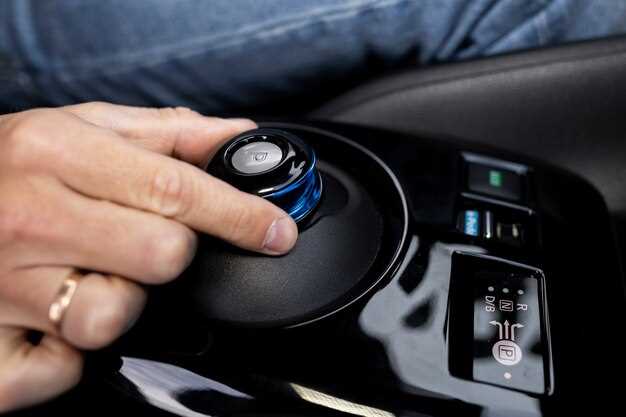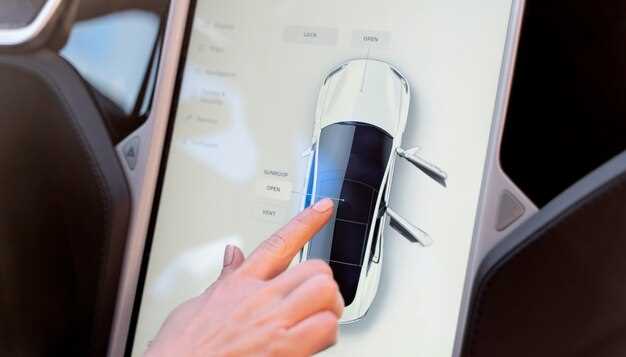
The increasing popularity of electric brake controllers in modern towing vehicles necessitates a comprehensive understanding of their mechanisms. These devices play a crucial role in enhancing vehicle safety and performance, especially when handling heavy loads. As advancements in technology continue to evolve, it becomes essential for drivers to grasp how these controllers operate and the benefits they provide.
At their core, electric brake controllers function by manipulating the braking force applied to the trailer’s brakes in correlation with the tow vehicle’s braking activities. This relationship is managed through a system of signals and sensors, ensuring that the trailer responds appropriately to braking demands. Understanding the mechanics behind this process can significantly improve the towing experience, making it both safer and more efficient.
In this article, we will delve into the different types of electric brake controllers, explore their components, and explain how they integrate with both the vehicle and the trailer. By dissecting these elements, we aim to provide a clearer perspective on the vital role electric brake controllers play in towing dynamics. Whether you’re a seasoned trailer operator or a novice, understanding these mechanics is invaluable for maximizing towing safety and performance.
Understanding the Components of Electric Brake Controllers
Electric brake controllers are essential devices that enhance the braking efficiency of trailers and vehicles. They consist of several critical components that work together to ensure safe and effective braking. Each component serves a specific function, contributing to the overall performance of the system.
One of the primary components is the controller unit itself, which houses electronic circuitry to manage braking signals. This unit interprets the driver’s input, typically via a gain setting, to determine the amount of braking force to apply based on the vehicle’s speed and load conditions.
Another vital component is the position sensor, which detects the braking position of the trailer wheels. This sensor provides real-time feedback to the controller, allowing it to adjust the brake application for optimal performance and prevent wheel lockup during sudden stops.
The actuator is the mechanism that physically engages the brakes. It converts the electrical signals from the controller into mechanical force, applying the brakes on the trailer wheels. The actuator must be durable and responsive to ensure effective braking during various driving conditions.
A wiring harness connects all components, facilitating communication between the controller, sensors, and actuator. This harness must be insulated and protected from environmental factors such as moisture and road debris to maintain reliability.
Additionally, electric brake controllers often include diagnostic features that provide visual alerts for potential issues, such as overcurrent or brake system faults. These alerts enable the driver to address problems promptly, enhancing safety while on the road.
Understanding these components and their functions helps users appreciate the technology behind electric brake controllers. Proper maintenance and timely upgrades of these components can significantly improve a vehicle’s braking capabilities, ensuring a safer towing experience.
How to Properly Install and Calibrate Electric Brake Controllers
Installing and calibrating electric brake controllers is critical for ensuring safe and efficient towing. Following a systematic approach can help avoid common issues and improve overall performance. Here’s a detailed guide:
Installation Steps

- Gather Necessary Tools and Materials:
- Electric brake controller
- Wiring harness
- Fuse
- Screwdriver
- Wire strippers and connectors
- Tape measure
- Drill (if required)
- Check Compatibility: Ensure that the electric brake controller is compatible with your vehicle and trailer type.
- Locate Mounting Position:
Choose a location within the vehicle’s cab that is easily accessible and visible to the driver. The controller should generally be mounted between the driver and passenger seats, at a height that allows for easy operation.
- Connect Wiring:
Consult the manufacturer’s wiring diagram. Common connections include:
- Powers the brake controller when the vehicle is turned on
- Connect the controller to the brake light circuit
- Wires connecting to the trailer’s brake system
- Ground wire connection
Use appropriate connectors and ensure all connections are secure.
- Install the Fuse: Insert the recommended fuse in the vehicle’s fuse panel to protect the system from electrical surges.
- Test the Connection:
Before finalizing the installation, test the connections. Ensure the brake controller powers up when the vehicle is turned on. Check for any wiring faults.
- Secure Everything: Ensure all wiring is secured and does not interfere with vehicle operations. Use zip ties if necessary.
Calibration Steps
- Set the Controller:
Consult the controller’s manual for specific settings based on your towing requirements. Adjust the settings for gain control, sensitivity, and mode (also known as “manual mode” or “automatic mode”).
- Attach the Trailer: Securely connect the trailer to the towing vehicle. Ensure all electrical connections are in place.
- Initial Test Drive:
Perform a test drive with the trailer attached. Start slow and gradually increase speed to assess the brake response.
- Adjust the Gain:
While driving, apply the trailer brakes using the controller. Adjust the gain setting according to how the brakes respond. The goal is to achieve smooth, controlled braking without skidding.
- Test Different Conditions:
Test braking under various conditions, including stopping from different speeds and on inclines. Adjust the settings as necessary until optimal braking performance is achieved.
- Final Check:
Once calibrated, conduct a thorough check to ensure everything functions properly. Listen for unusual sounds and watch for any erratic movements.
Proper installation and calibration of electric brake controllers enhance towing safety and maneuverability. Regular checks and adjustments may be needed, especially if towing different trailers.
Troubleshooting Common Issues with Electric Brake Controllers

Electric brake controllers play a crucial role in ensuring the safe operation of towing setups. However, they can sometimes experience issues that may impede their functionality. Understanding common problems and their solutions can help you maintain optimal performance.
One prevalent issue is insufficient braking power. This can occur if the controller is not calibrated correctly. To troubleshoot, first check the settings on the controller and adjust the gain to ensure that it matches the weight of the trailer. Ensure the wiring between the controller and the trailer brakes is secure, as loose connections can also diminish braking effectiveness.
Another common problem is the controller not responding or being unresponsive. This may be due to a blown fuse or a malfunctioning power source. Begin by inspecting the vehicle’s fuse box for any blown fuses related to the brake controller. If fuses are intact, verify that the controller is receiving power by checking the wiring and connectors. If the issue persists, the controller itself may need to be replaced.
Inconsistent braking can also be a concern, which may lead to jerky stops or a lack of smoothness. This issue can stem from a misalignment of the brake settings or poor trailer load balance. Double-check the brake settings on the controller and adjust them as necessary. Additionally, ensure that the load on the trailer is evenly distributed to prevent instability during braking.
Faulty wiring is another common culprit behind electric brake controller issues. Worn-out or frayed wiring can lead to intermittent connections. Inspect all wiring for any signs of wear or damage. If any issues are detected, replace the affected wiring to restore proper function. Ensure that all connections are clean and secure to prevent future problems.
Lastly, issues with the trailer brakes themselves can affect the performance of the brake controller. If the existing brakes are not in good condition, they may require adjustment or replacement. Regular maintenance checks on the trailer braking system can help identify potential problems before they impact the electric brake controller’s functionality.

